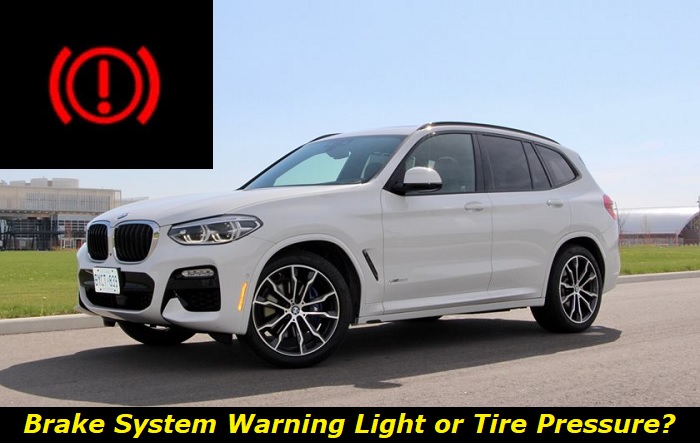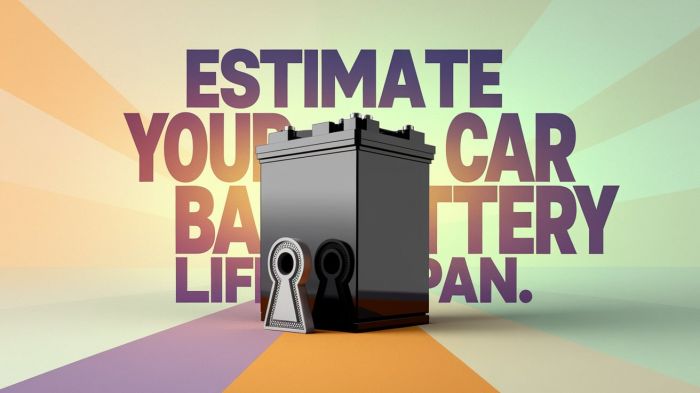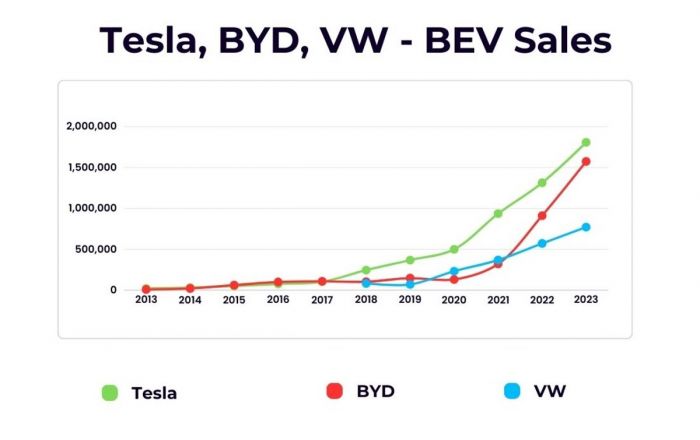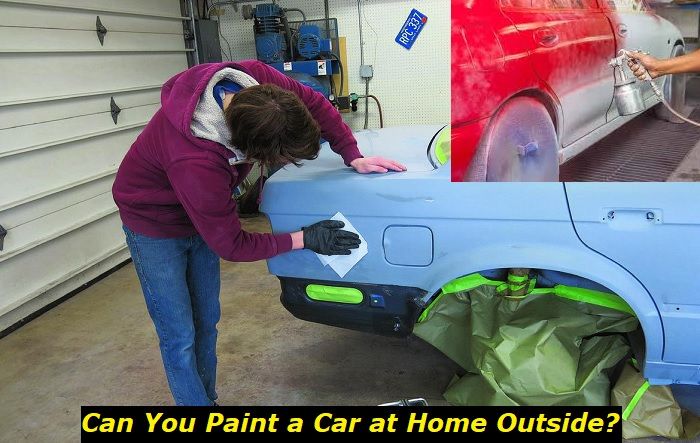If you see some unexpected warning light in your BMW, you should be worried a little. What does it mean, can I drive further, should I call the dealership, how to reset it? All these questions start attacking your mind when you see the red exclamation mark in brackets in your BMW.
Red exclamation mark in brackets highlights
- Common reasons:parking brake activated, problems with braking system
- How to fix:disengage parking brake, check brake fluid, check brake pads
- Possible consequences:you may lose brakes
- Priority level:High
- Can you drive?Not recommended
- DIY repair:Possible
- Repair price range:$200-$500

The tire pressure light in your BMW
This light is not that common for your vehicle. It looks like the exclamation mark in the brackets and there is also a tire tread underneath the exclamation mark. It's almost always red, but in some cars, it may also be yellow. It's important to react properly to this warning light because driving with a flat tire is unacceptable.
Also, the light will go on the dash of your BMW vehicle when the tire pressure is declining on one of the wheels. The system catches the moment when it's not safe anymore to drive and throws the light.
Here's how you should react:
- immediately stop the vehicle to avoid driving with poorly inflated tires;
- if you have the tire pressure monitor in the car, launch it and see the readings in each tire;
- go out of the vehicle and look at every tire, if you see that one of them is flat or almost flat, you will need to use the spare wheel;
- if the tires look good, it would be a great idea to measure the pressure in all tires (usually all tire compressors have manometers for this);
- the best idea is to inflate the tire and see if it holds the pressure;
- if the tire is not flat but lost some pressure, you can slowly drive to the nearest tire service;
- remember that driving on flat tires is only possible if you have tires that support run-flat technology.
You should also remember that your vehicle will not stop showing the tire pressure warning light once you fix the issue. The light may still be on because it needs some time to reset. You may use the TPMS reset button to make it faster. But even with this button, the tire pressure warning light will be there for several minutes.
Although it doesn't seem like a very serious problem, a wrongly inflated tire may actually be dangerous. You may lose traction when braking and the car may easily go crazy on the road if the tire pressure is wrong. So, always take this warning light seriously.
The brake system warning light in your BMW
In most cases, when people describe the warning light they see as the exclamation mark in brackets in red color, they are talking about the brake system warning light in their BMW vehicles. This is exactly the exclamation mark in a circle and also in two brackets. Very often, this warning light is accompanied by a certain error message.
It's important to react quickly because sometimes this warning light may mean fatal problems with the brakes. But it's not always so serious.
Here are the reasons why you can see this warning light in your BMW:
1. Parking brake is on
If you start driving and suddenly see this warning light on the dash, just check if the parking brake is not on. If it is, the light will try to warn you that when you are driving like this, the rear brake pads are wearing out heavily.
Even if the parking brake is off, you may need to turn it on and off a couple of times. Maybe, the switch in the parking brake is malfunctioning and this leads to problems with the light.
2. Low brake fluid
One more possible reason is that the brake fluid is lower than the minimum mark in the reservoir. You can check it under the hood of your car. If this is the case, just get the proper brake fluid and add it to the reservoir. After a couple of minutes, the error should go off.
Make sure you go to the repair shop or to the dealership and have the brake system checked for leaks and other problems. Brake fluid shouldn't go down very often.
3. Brake pads need replacement
One more possible issue is that the brake pads need replacement. Some BMW cars have special sensors that estimate the condition of brakes. If the pads are worn out, these sensors will send a certain code to the ECU and will obviously light up the brake system warning light.
Also, when the brake pads are totally worn out, you can see that the brake fluid level also drops. It means that the sensor of the brake fluid level may also throw a code and light up the warning light on the dash of your BMW.
4. Problems with ABS
The ABS system also relies on many parts of the braking system. That's why, when it malfunctions, the brake system warning light may go on. It doesn't mean that you need to stop immediately, but it certainly means that you have to be careful on the road.
ABS problems may also be accompanied by different error messages and codes. The best way to check this is to read the codes in the ECU and see which exact unit throws the code and lights up the brake warning light.
5. Bad readings from sensors in the braking system
Depending on the year and model, your BMW may have several different sensors in the braking system. It means that these sensors may send wrong readings and eventually trigger the warning light. It's quite hard to locate the problem without a professional code scanner, so the BMW dealership is the best choice for diagnosing and locating the actual issue.
6. Broken light bulbs in the braking system
Your rear lights have at least two light bulbs that are activated when you press the brake pedal. The brake switch sends the signal to the bulbs and they light up. If one of the bulbs lost contact or is dead, one of the possible scenarios is the turning on of the brake system warning light on the dash of your BMW. Also, the blown lamp warning light may light up if your car has this light.
Can you keep driving when you see the brake system warning light?
This is not a really good idea to just keep driving without checking what's wrong with the vehicle. In one bad moment, you may lose the ability to brake at all and the car will uncontrollably hit something or someone on the road. In this case, you will be found guilty of the accident and will have to face the consequences.
Of course, it's always better to stop your car and check whatever you can check on your own. Here are some ideas:
- check if the fluid in the brake fluid reservoir is at the normal level;
- look at the brake pads and try to understand if they are thick enough;
- turn the parking brake on and off several times;
- check if the brake lights are on when someone presses the brake pedal;
- if it's possible, use the OBD2 scanner to read the codes.
If everything seems to be OK, you don't see any leaks under the vehicle and the brake pedal feels normal, you can keep on driving. But take the right side of the road, turn on the emergency lights, and go slowly - up to 10 MPH. If you suddenly feel that the brake pedal sinks without actually braking, use the parking brake to stop your vehicle immediately.
Plan the visit to the nearest dealership or the trusted repair shop to locate the problem and solve it. Even if it's just a glitch with one of the ABS sensors, you better be careful till you are 100% sure this is safe. Please don't drive your vehicle with a brake system warning light at high speed or to long distances.
Final thoughts
Your BMW is quite a smart vehicle and you will get all the needed information about the condition of the important units and parts of your car. In most cases, the warning light showing the exclamation mark in two brackets means that there are some problems with the braking system. It may just be a glitch in some sensors but may also be a serious problem that can affect safety.
Also, this warning light may mean that the tire pressure is wrong and you need to pay attention to it.
About the authors
The CarAraC research team is composed of seasoned auto mechanics and automotive industry professionals, including individuals with advanced degrees and certifications in their field. Our team members boast prestigious credentials, reflecting their extensive knowledge and skills. These qualifications include: IMI: Institute of the Motor Industry, ASE-Certified Master Automobile Technicians; Coventry University, Graduate of MA in Automotive Journalism; Politecnico di Torino, Italy, MS Automotive Engineering; Ss. Cyril and Methodius University in Skopje, Mechanical University in Skopje; TOC Automotive College; DHA Suffa University, Department of Mechanical Engineering






Add comment